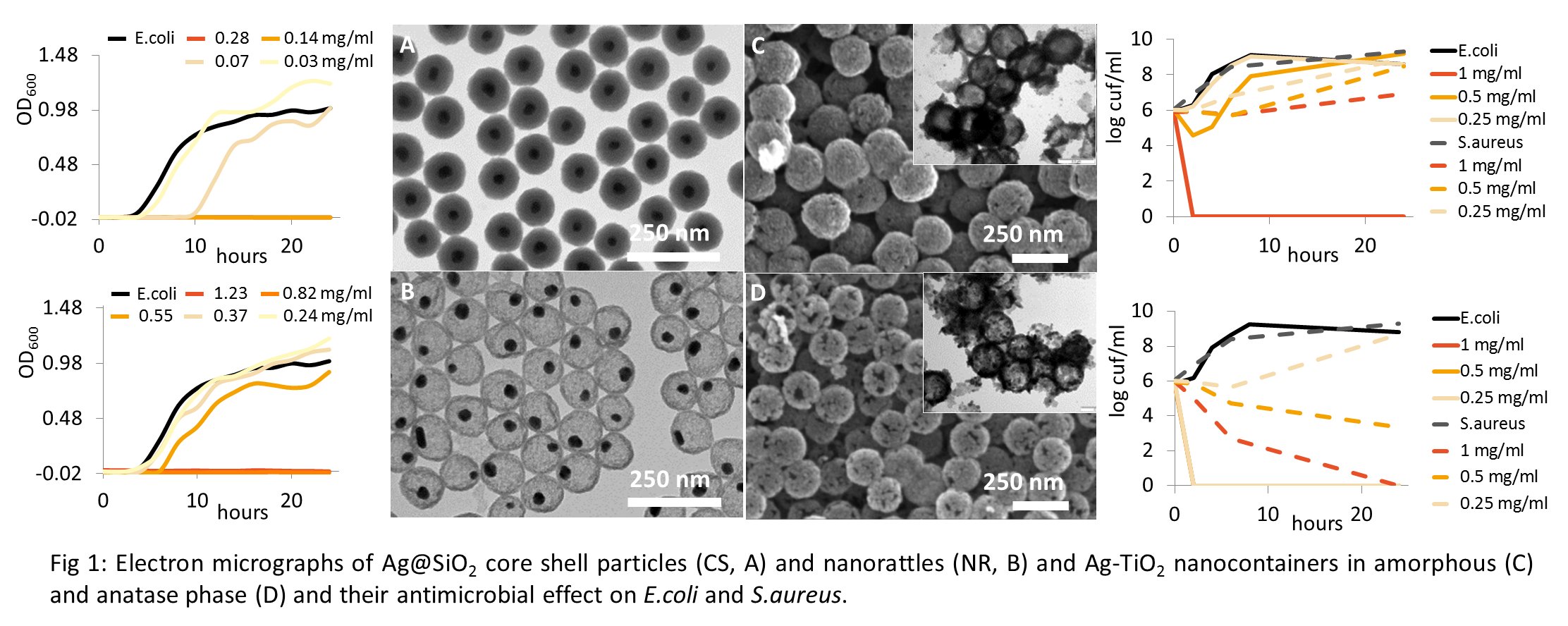Ag nanoencapsulation for antimicrobial coatings
Since long time silver is known for its good antimicrobial properties and biocompatibility. Silver nanoparticle based antimicrobial coatings can make use of these properties to fight medical device related infections by preventing biofilm formation especially if they show activity against multi resistant bacteria strains. In this context different types of Ag@metaloxide nanoparticles are investigated for their antimicrobial properties in correlation with the particle morphology. The metal oxide shells made of TiO2 or SiO2 protect the Ag particles from aggregation and might give control over the release rate of Ag+ as antimicrobial active species. Moreover encapsulation offers ways to covalent attachment to implant surfaces as well as to sol gel coatings.

100 nm Ag@SiO2 core shell particles (CS, Fig. 1 A) have been realized by coating Ag nanoparticles synthesized by the polyol process with a silica shell by a modified Stöber method. In a second step the inner part of the silica shell was removed by a surface protected etching process1 which changes the particles’ morphology towards a so called nanorattle (NR, Fig. 1 B). In a second synthesis, Ag nanoparticle containing amorphous TiO2 nanocontainers of about 200 nm were synthesized by removing a polystyrene template (Fig. 1 C). A subsequent calcination step transforms the amorphous shell into crystalline anatase (Fig. 1 D). Depending on the particles’ morphology different Ag+ release kinetics could be observed by measuring ICP-OES. In the case of silica as shell material the nanorattles show a stronger release than the core shell particles over a long time period, but within the first 24 hours the reverse trend can be observed (Fig. 1, left). This correlates to the core shells better antimicrobial activity. Tests against E.coli show that they are killing at concentrations of about 0.14 mg/ml whereas 0.82 mg/ml of nanorattles are needed to see the same effect. In the case of TiO2 nanocontainers the anatase particles are able to release more Ag+ which is clearly reflected in their better antimicrobial efficiency against both, E.coli and S.aureus (Fig.1, right). In both cases no Ag related cytotoxicity was found against fibroblasts and macrophage cells. Antimicrobial tests against a multi-resistant S.aureus strain are ongoing. Both types of silver-containing particles thus fulfil the requirements for the development of novel antibacterial nanocoatings on biomaterial surfaces. Currently we are developing strategies to link them to implant model surfaces of titanium or to incorporate them into polymer matrices.
[1] Feng Hu, Yan Zhang, Guangcun Chen, Chunyan Li, Qiangbin Wangu small 2015, 11, 985-993.